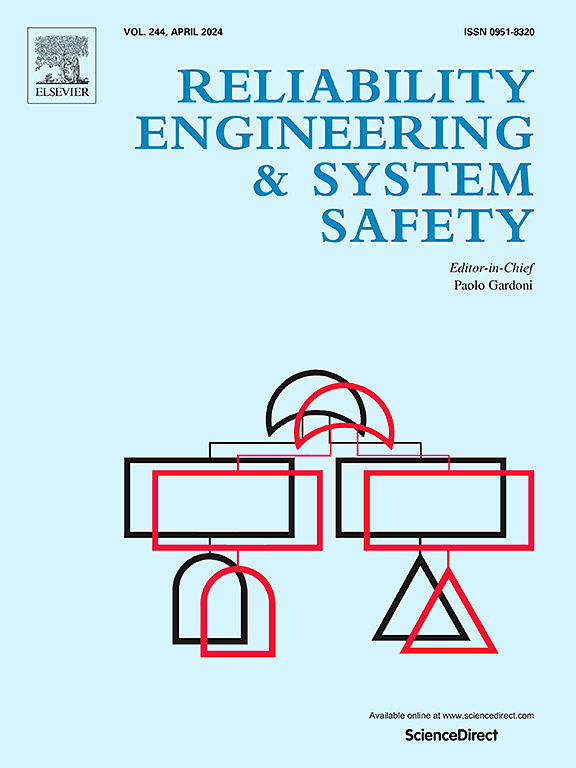主余震序列下超高压换流站的弹性重要性度量
IF 9.4
1区 工程技术
Q1 ENGINEERING, INDUSTRIAL
引用次数: 0
摘要
特高压(UHV)换流站对电力系统至关重要,但其高耸的结构极易受到地震的影响。因此,提高换流站的恢复能力,使其能够承受地震造成的破坏并迅速恢复,具有重要意义。然而,与地震相关的不确定性极大地阻碍了灾后恢复过程,从而影响了特高压换流站设备的重要性排序。为了解决这些不确定性,本文提出了一种新的基于弹性的重要性(RBI)测量方法,综合了主余震序列下的脆弱性和可恢复性。具体而言,采用轮盘赌-轮盘损伤情景生成方法生成考虑不确定性的设备损伤情景。考虑主震-余震序列的累积损伤效应,计算RBI措施来评估设备的易损性和可恢复性。采用Copeland Score (CS)随机排序方法对设备RBI进行排序,为灾后恢复提供最优排序策略。以±800 kV换流站为例,对RBI方法进行了验证。结果表明,与传统的性能恢复重要性(PRI)方法相比,基于rbi的恢复策略提高了10.4%的弹性。忽略余震将导致对恢复力的高估约5.6%。本文章由计算机程序翻译,如有差异,请以英文原文为准。
Resilience-based importance measure for ultra-high voltage converter stations under mainshock-aftershock sequences
Ultra-high voltage (UHV) converter stations are crucial for power systems, but their towering structures are highly vulnerable to earthquakes. It is, therefore, of great significance to enhance the resilience of the converter stations such that they can withstand and recover promptly from disruptions caused by earthquakes. Nevertheless, the uncertainties associated with earthquakes significantly hinder the post-earthquake recovery process, thus impacting importance ranking of the equipment in UHV converter stations. To address these uncertainties, this article proposes a new resilience-based importance (RBI) measure integrating vulnerability and recoverability under mainshock-aftershock sequences. Specifically, a roulette-wheel damage scenario generation method is adopted to generate equipment damage scenarios considering uncertainties. RBI measures considering cumulative damage effects from mainshock-aftershock sequences are calculated to evaluate equipment vulnerability and recoverability. The Copeland Score (CS) stochastic ranking method ranks equipment RBI, providing an optimal prioritization strategy for post-earthquake recovery. A case study of a ± 800 kV converter station demonstrates the proposed RBI method. Results show the RBI-based recovery strategy improves resilience by 10.4 % compared to traditional performance recovery importance (PRI) method. Neglecting aftershocks would result in approximately a 5.6 % overestimation of resilience.
求助全文
通过发布文献求助,成功后即可免费获取论文全文。
去求助
来源期刊

Reliability Engineering & System Safety
管理科学-工程:工业
CiteScore
15.20
自引率
39.50%
发文量
621
审稿时长
67 days
期刊介绍:
Elsevier publishes Reliability Engineering & System Safety in association with the European Safety and Reliability Association and the Safety Engineering and Risk Analysis Division. The international journal is devoted to developing and applying methods to enhance the safety and reliability of complex technological systems, like nuclear power plants, chemical plants, hazardous waste facilities, space systems, offshore and maritime systems, transportation systems, constructed infrastructure, and manufacturing plants. The journal normally publishes only articles that involve the analysis of substantive problems related to the reliability of complex systems or present techniques and/or theoretical results that have a discernable relationship to the solution of such problems. An important aim is to balance academic material and practical applications.
 求助内容:
求助内容: 应助结果提醒方式:
应助结果提醒方式:


